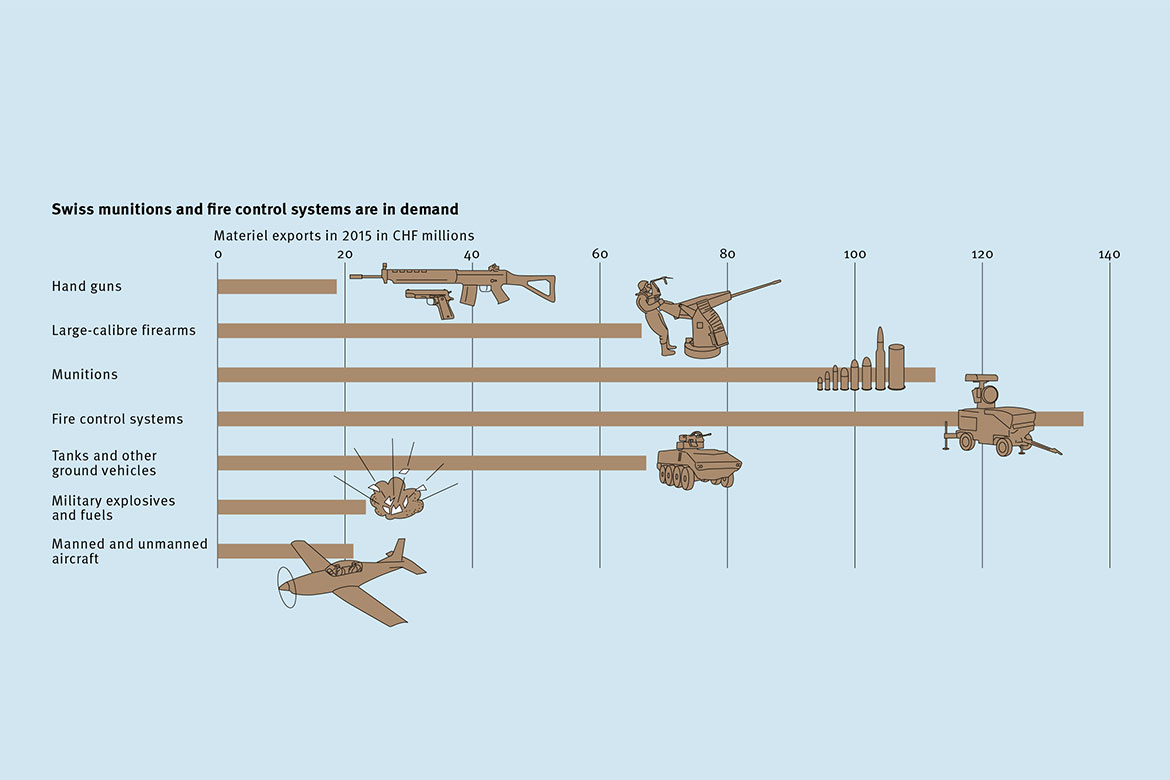Weapons of the (near) future
What weapons will be used to fight the wars of the future and to defend our borders? A glance at some of the latest technology and developments shows that science fiction is already becoming science fact.

Illustrations by 1kilo
Microwave weapons
The American Air Force recently confirmed that the Lockheed AC-130 gunship – a combination of troop transporter and combat aircraft – is going to be equipped with microwave weapons. Such 'active denial systems' have been undergoing tests for several years, including for use against violent crowds. They are intended to incapacitate people temporarily: the microwaves heat the surface of the skin, creating intense pain. It is still being debated whether or not these microwaves are truly harmless to humans. Experts believe that such systems have not yet entered into widespread use because the political will is absent – not because of any technological considerations.
Lasers
Laser weapons that cut and destroy reached a point of technical readiness a few years ago. The US battleship USS Ponce has been patrolling the Persian Gulf since 2014 with a laser canon as its standard weapon system. The precise technical data of the canon is still secret. But experts assume that this weapon, which is supposedly based on a standard, 30 kilowatt, commercial cutting laser, has a range of one kilometre for thin-walled targets. A whole series of other directed-energy weapons are currently also being tested.
Remote-controlled insects
Nature is superior to our technology in many ways. So why not bring together biology and technological progress? One of the most surprising research programmes of the Defense Advanced Research Projects Agency (DARPA), a branch of the US Defense Department, is called 'Hybrid Insect Micro-Electro- Mechanical Systems'. It is trying to breed crawling and flying insects into which microcontrollers have already been inserted at the larval stage, and which then develop into remote-controlled, hybrid beings. These could be used primarily in the areas of surveillance and espionage. The researchers have also been investigating biological weapons. But very little has emerged as yet about any concrete research successes.
'Rods from God'
The 1979 SALT II Treaty forbids the deployment of weapons of mass destruction in orbit. Conventional weapon systems are nevertheless being developed, including an idea that the science fiction author Jerry Pournelle came up with in the 1950s and that he called the 'Thor project'. This involved metal objects being dropped by satellites with pinpoint accuracy. A few years ago, the US Air Force presented a system that featured tungsten rods ten metres in length that would be able to withstand the heat of re-entry into the atmosphere and would reach speeds of over 3,000 metres per second, thus allowing them to penetrate even the thickest concrete bunkers. But all this is presumably still tomorrow's world: the enormous costs involved mean that these 'hypervelocity rod bundles' are likely to remain mere science fiction.
Autonomous war machines
On the battlefields of the future, machines engage in mighty conflict with each other – at least, that's how science fiction sees it. But sci-fi aficionados also know that combat robots can be used against people. The four-legged robot made by Boston Dynamics – bought up by Google in 2013 – was developed as an automated packhorse for the military. These machines are decked out with heat sensors and always run to heel. But they also demonstrate how technology will soon advance far enough for robots to hunt down enemy soldiers. Algorithms that make autonomous decisions about life and death pose new ethical questions. It's not just the United Nations that follows this question, two thousand experts including Stephen Hawking, Steve Wozniak and Noam Chomsky spoke out against the use of autonomous weapon systems last year.




